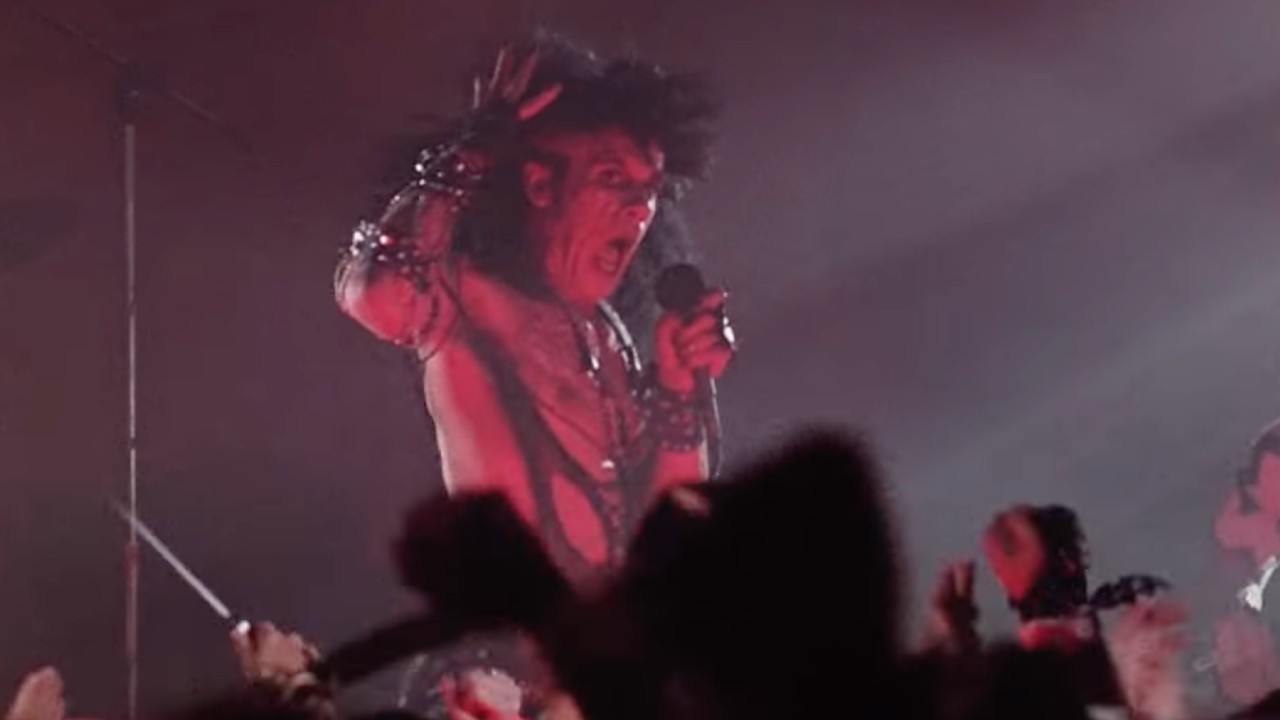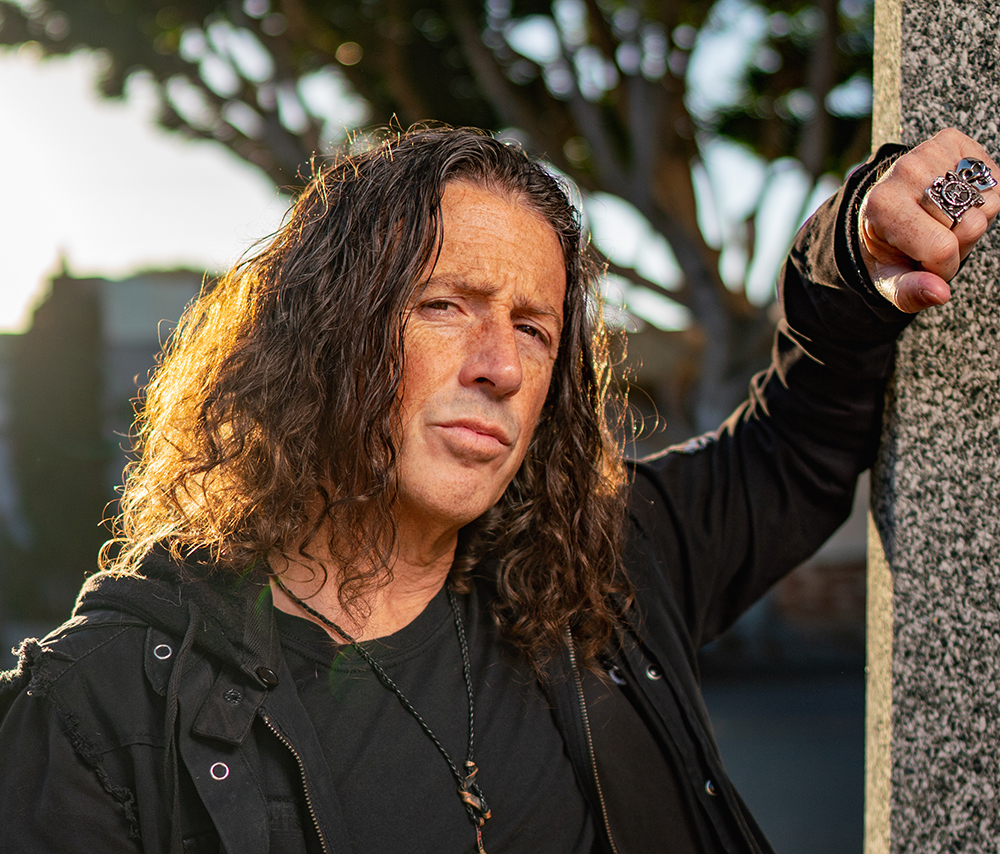Demons, hair metal and Ozzy Osbourne playing a priest: Why Trick Or Treat is the 80s’ unsung metal horror classic
In 1986, director Charles Martin Smith made an underrated horror movie lambasting the PMRC – and he got Gene Simmons, Ozzy Osbourne and Motörhead to help.

Screenwriters have always gleefully exploited social anxieties to ratchet up the tension in horror movies. George A. Romero’s landmark 1968 zombiepocalypse, Night Of The Living Dead, famously drew parallels to the racism and violent social unrest of the day, for example. But, both before and since, scores of horror films have demonstrated that an era’s greatest cultural fears can inspire some bloody good movies. Across the US in the ’80s, talk show hosts, tabloids, televangelists and the self-appointed moralists of the day declared all-out war on what they perceived as an imminent threat to American decency: heavy metal.
Metal certainly wasn’t the only bogeyman of the 80s, but it was easily the most captivating, with an army of leering, painted and highly-sexualised musicians relentlessly beamed into households across the globe (thanks, MTV!). Bands like Mötley Crüe, Poison, W.A.S.P., Skid Row and others did little to downplay the condemnations, raising their “sex, drugs and rock ’n’ roll” ethos to heroic new levels. Baseless rumours of Satanic cults committing human sacrifice and ritualistic sexual abuse fuelled the now-debunked phenomenon known as the Satanic Panic, with metalheads accused of being the Dark Lord’s most committed emissaries. In response, then-Senator Al Gore’s wife Tipper co-founded the Parental Music Resource Center (PMRC), which advocated for aggressive censorship of metal and hip hop. Their efforts mostly included the arbitrary inclusion of parental warning labels on albums that they deemed morally offensive.
Twisted Sister’s Dee Snider, along with other popular artists of the day, testified in congressional hearings against the PMRC’s growing encroachment on free speech and the dangers of censorship. Meanwhile, Judas Priest were dragged through a gauntlet of vilification when they were taken to court with accusations that they used backmasking (embedding secret hidden messages in LPs that can only be heard when played backwards) to encourage two fans to commit suicide. They were acquitted of all charges.
In short, it was an ideal landscape for a small-budget, metal-themed horror film called Trick Or Treat. Writer Rhet Topham stated that the 1986 movie was sold on a one-line pitch: “Kid plays record backwards to unleash revengeful ghost rocker.”
The film’s formulaic set-up centres around Eddie Weinbauer: an alienated, metal-loving teenage outcast played by Marc Price. Eddie’s crush, Lisa, is conveniently dating Tim, the school douche. Tim and his friends mercilessly bully Eddie throughout the early stages of the film, which we know will not end well for them because, well… bullies tend to fare really, really badly in horror movies.

Things get interesting when Eddie’s musical idol, a depraved metaller named Sammi Curr, dies in a hotel fire. Played by Tony Fields, Sammi resembles a cross between Nikki Sixx and Tim Curry’s Dr. Frank-N-Furter in The Rocky Horror Picture Show. Bereft, Eddie seeks consolation from a local DJ (played by a cowboy hat-wearing Gene Simmons), who takes pity on the lad and gives Eddie a copy of the last record that Sammi ever recorded. It’s a one-off demo that the DJ will be playing on Halloween at midnight.
When Eddie gets home and plays the demo, it begins playing backwards on its own, with chilling demonic messages pouring forth in Sammi’s voice. Just like that, Sammi travels from beyond the grave, through the stereo and into Eddie’s world in the guise of evil electrical forces. Initially, this is a good thing. Under Sammi’s tutelage, Eddie wreaks vengeance upon the bullies and gets the girl. But the carnage doesn’t stop there and, as bodies pile up, Eddie realises that Sammi is a murderous entity seeking to destroy the world. From there, it’s a blood-drenched race to get the metalized genie back into the proverbial bottle before the DJ plays the demo over the radio, unleashing Sammi’s evil spirit into every boombox in town.
Sign up below to get the latest from Metal Hammer, plus exclusive special offers, direct to your inbox!
The performances are deliciously OTT, with Sammi Curr drawing from every possible Sunset Strip hair metal cliché ever captured on video. Blackie Lawless was reportedly offered the role, but he declined, not wanting to lip sync the music written for Sammi. Both Sammi’s music and the film’s soundtrack were provided by Fastway, the ’80s hard rock supergroup formed by Motörhead guitarist “Fast” Eddie Clarke, Pete Way from UFO, and vocalist Dave King, who later struck gold as frontman of the Celt-punk juggernaut Flogging Molly. Fastway released the soundtrack as their third album, and the songs are precisely the sort of vapid, boozy, fist-pumpers that you’d expect from the apex of the glam metal era.
As an 80s time capsule, Trick Or Treat is tough to beat. In a news clip within the movie, Sammi is shown testifying before Congress in defence of his music, à la Dee Snider, and he later bites the head off of a snake: an unambiguous nod to Ozzy Osbourne biting the head off of a dove in 1981. Not coincidentally, Ozzy makes one of his most polished movie cameos as well, playing a dour, moralising televangelist. Producers reportedly asked Ozzy to ad lib for 45 minutes and chose the best bits for the final cut. Sammi Curr even has a little demon mascot akin to Iron Maiden’s Eddie The Head: named Skeezix, it appears in one fleeting but thoroughly-epic scene.
Shot on a $3.5M budget, first-time director Charles Martin Smith was given an aggressive deadline: producers wanted the movie filmed and released in less than a year, with an October 24, 1986 release date. Smith and his team hit the mark and the film did comparatively well, raking in nearly $7 million at the box office. Nonetheless, it fell well-short of the commercial heights of mainstream horror films and no sequel was commissioned.
It’s a shame because, on balance, Trick Or Treat is acres of fun. Cheesy as hell? Absolutely. But, the film masterfully sends up the pearl-clutching hysteria of its time, packed with scores of real-life headlines, some bona fide metal gods in cameo roles and plenty of laughs of both the intentional and unintentional varieties. It’s not, as some initially assumed, an indictment of heavy metal, but a thorough dragging of censorship: a theme that still rings loudly nearly forty years later. Sadly, the film has yet to receive the extras-packed retrospective release that it richly deserves, but it is well worth inviting over your squad, firing up some popcorn and enjoying this stupidly entertaining slice of vintage ’80s horror.
Hailing from San Diego, California, Joe Daly is an award-winning music journalist with over thirty years experience. Since 2010, Joe has been a regular contributor for Metal Hammer, penning cover features, news stories, album reviews and other content. Joe also writes for Classic Rock, Bass Player, Men’s Health and Outburn magazines. He has served as Music Editor for several online outlets and he has been a contributor for SPIN, the BBC and a frequent guest on several podcasts. When he’s not serenading his neighbours with black metal, Joe enjoys playing hockey, beating on his bass and fawning over his dogs.

